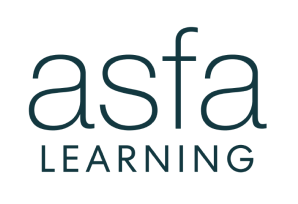Media Release: 6 February 2012
Retirement costs remain steady: new ASFA Retirement Standard figures
A couple looking to achieve a ‘comfortable’ retirement will need to spend $55,249 a year, while those seeking a ‘modest’ retirement lifestyle need to spend $31,675 a year, according to new figures released today for the ASFA Retirement Standard. These figures are marginally down on the equivalent figures for the previous quarter.
The updated figures reverse the trend of the previous few quarters where the amount needed by retirees to fund their post-work lifestyle continued to increase.
The aggregate costs for a couple living comfortably in retirement were down by 0.1 per cent in the December quarter 2011 from the September quarter 2011 (see Table 1 for budget breakdown).
The movement in costs over the quarter for retirees was similar to the ‘no change’ recorded in the All Groups Consumer Price Index (CPI). Both were basically unchanged between the two quarters.
However, in some quarters the price increases recorded will differ as retiree households on average have somewhat different spending patterns to the rest of the population.
Along with generally owning their own home outright (so cost increases for housing are less important for retirees), on average they spend a negligible amount on education services.
In contrast, food, health, transportation and recreation spending form a large part of retiree budgets.
Table 1: Budgets for various households and living standards (December quarter 2011)
| Modest lifestyle – single | Modest lifestyle – couple | Comfortable lifestyle – single | Comfortable lifestyle – couple | |
| Housing – ongoing only | $58.20 | $55.87 | $67.46 | $78.20 |
| Energy | $34.35 | $45.62 | $34.86 | $47.28 |
| Food | $74.61 | $154.56 | $106.59 | $191.86 |
| Clothing | $18.08 | $29.36 | $39.14 | $58.72 |
| Household goods and services | $26.08 | $35.36 | $73.36 | $85.94 |
| Health | $34.32 | $66.24 | $68.09 | $120.18 |
| Transport | $92.21 | $94.82 | $137.41 | $140.02 |
| Leisure | $73.40 | $109.36 | $222.44 | $304.83 |
| Communications | $9.30 | $16.29 | $25.57 | $32.55 |
| Total per week | $420.57 | $607.47 | $774.93 | $1,059.57 |
| Total per year | $21,930 | $31,675 | $40,407 | $55,249 |
The figures in each case assume that the retiree(s) own their own home and relate to expenditure by the household. This can be greater than household income after income tax where there is a drawdown on capital over the period of retirement. Single calculations are based on female figures. All calculations are weekly, unless otherwise stated.
Between the September quarter 2011 and the December quarter 2011, retirees had a 1.5 per cent decrease in the cost of food but over the year to the December quarter, there was an increase of 2.5 per cent. A fall in the price of fruit in the December quarter (by 13.4 per cent) and a five per cent fall in the price of vegetables were largely responsible.
The decrease in the price of fruit and vegetables was due to seasonal factors and favourable growing conditions. The movement in the price of fruit was particularly affected by a fall in the cost of bananas as supplies recovered from the adverse impact of Cyclone Yasi.
Electricity costs rose on average by 0.6 per cent, reflecting substantial price increases in a few, smaller states following relatively large increases in other states the quarter before.
Transport costs were unchanged between the quarters with a decrease in the cost of motor vehicles offsetting a rise in the price of petrol.
The price of leisure goods and services rose by 0.8 per cent between the quarters, with the cost of domestic holidays increasing by 7.3 per cent and the cost of overseas holidays falling by 1.9 per cent.
Communications costs increased by 1.1 per cent in the quarter mainly due to increased prices for telecommunications equipment and services but over the year the increase in costs was only 1.6 per cent.
The 1.2 per cent fall in the price of health services reflected a fall in pharmaceutical prices with more individuals benefiting from the Pharmaceutical Benefits Scheme safety net. However, over the year there was a 3.6 per cent increase in the costs of health services. Over the longer term, health services tend to experience higher increases in prices than other categories of consumer goods and services.
More information
Costs and summary figures can be accessed via the ASFA website. The document on the ASFA Retirement Standard also includes estimates of the lump sums that would be needed in order to support expenditure at the various levels set out in the modest and comfortable budgets for singles and couples. These lump sums did not change between the September and December quarters because the expenditure needs were basically the same. The lump sum needed for a comfortable lifestyle, assuming access to a part Age Pension, is around $510,000 for a couple and $430,000 for a single.
For media inquiries, please contact:
Pauline Vamos, CEO, 0433 169 342
Rebecca Glenn, GM Marketing and Communications, 0416 170 439
Megan McDougall, Media and Communications Coordinator, (02) 8079 0849
About ASFA – the voice of super
The Association of Superannuation Funds of Australia is the peak industry body representing the superannuation and retirement industry. Its members represent over 90 per cent of the approximately 12 million Australians with superannuation. ASFA members manage or advise on the bulk of the $1.3 trillion in superannuation assets as at September 2011. ASFA is the only organisation that represents all types of superannuation funds (retail, industry, corporate and public sector) and associated service providers.





